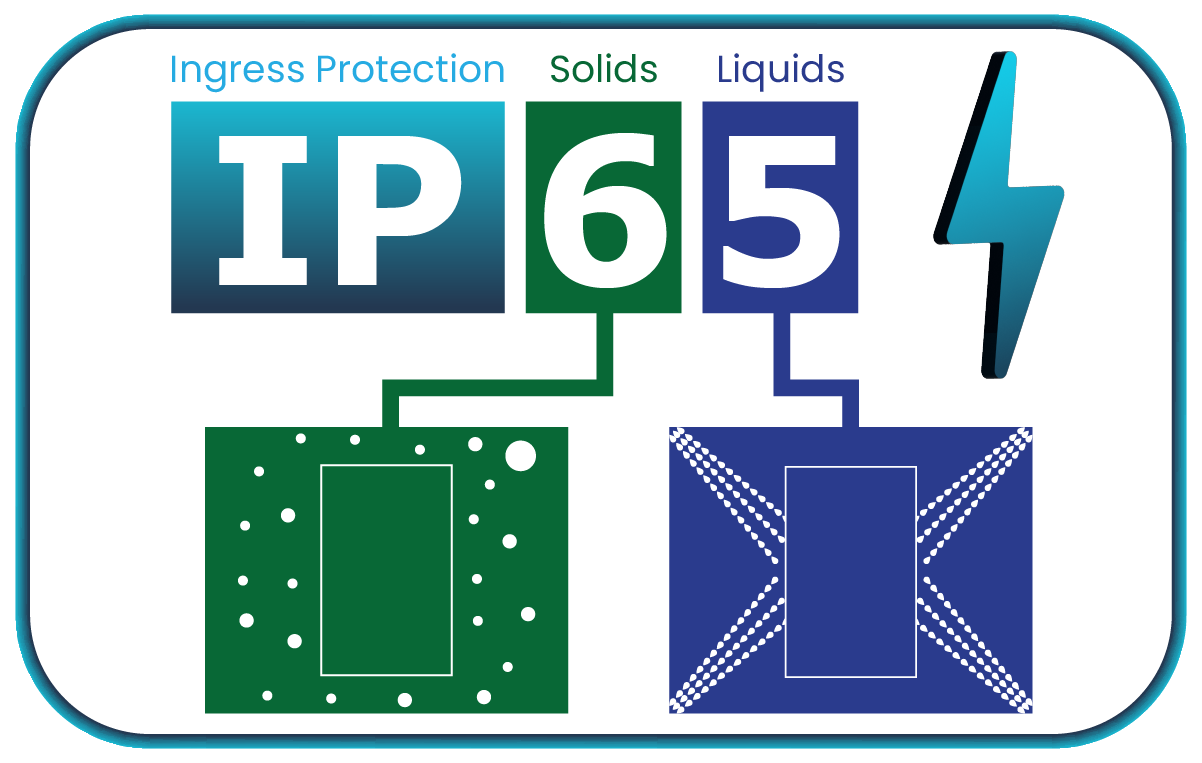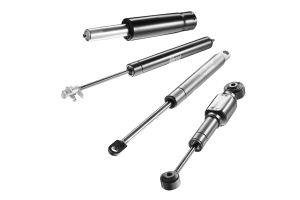What are IP Ratings?

What are IP Ratings?
In the dynamic world of electronics, safeguarding devices against environmental elements is imperative. This is precisely where IP ratings, or Ingress Protection ratings, come into play. They serve as a standardised code that defines the level of protection an electronic device offers against solids and liquids.
The IP rating, also known as the IP code, categorises the level of protection offered by an enclosure for electrical equipment operating at voltages up to 72.5 kV. These ratings are established according to the global standard EN 60529, which is represented by the British Standard BS EN 60529:1992. This standard sets out specific levels of effectiveness in sealing against "ingress," which refers to the potential entry of external elements like tools, dirt, and liquid water.
IP ratings are represented by two digits, each holding specific significance. The first digit indicates the level of protection against solid particles, while the second digit signifies protection against liquids. For example, an IP65 rating suggests complete protection against dust (6) and resistance to low-pressure water jets (5).
Ingress Protection (IP) Rating System Table
|
Level of protection |
Solid Rating |
|
Liquid Rating |
Level of protection |
|
No protection. |
0 |
|
0 |
No protection. |
|
Protection against solid objects larger than 50mm. |
1 |
|
1 |
Protection against vertically dripping water. Limited ingress permitted. |
|
Protection against solid objects larger than 12.5mm. |
2 |
|
2 |
Protection against vertically dripping water when enclosure is at an angle of up to 15º. Limited ingress permitted. |
|
Protection against solid objects larger than 2.5mm. |
3 |
|
3 |
Protection against direct water spray of angles up to 60°. |
|
Protection against solid objects larger than 1mm. |
4 |
|
4 |
Protection against splashing water from any angle. Limited ingress permitted. |
|
Limited protection from dust. |
5 |
|
5 |
Protection against low-pressure jets (6.3mm) of directed water from any angle. Limited ingress permitted. |
|
Complete protection from dust. |
6 |
|
6 |
Protection against high-pressure jets (12.5mm nozzle) of directed water from any direction. Limited ingress permitted. |
|
|
|
7 |
Protection against full immersion for up to 30 minutes at depths between 15cm and 1 metre (limited ingress permitted with no harmful effects). |
|
|
8 |
Protection against extended immersion under higher pressure i.e. greater depths. |
|||
|
9 |
Protection against high-pressure, high-temperature jet sprays, wash-downs, or steam-cleaning procedures. |
|||
This means that an IP65 rated device can be exposed to dust and water without being damaged. It is suitable for use in most outdoor environments, such as construction sites, factories, and marine applications.
However, it is also important to note that an IP65 rating does not guarantee that a device is fully waterproof as it is still possible for water to enter the device if it is submerged or subjected to high-pressure water jets.
Some IP codes contain an "X" instead of a number. An "X" in an IP rating means that the manufacturer has not specified a protection rating for that criteria.
This could be because the manufacturer may not have tested the device for that particular criteria, that the manufacturer may consider the criteria to be irrelevant for that specific component, or that the manufacturer may not want to disclose the protection rating for that criteria.
NOTE: If you are unsure whether an IP65 rated device is suitable for your needs, it is always best to consult with the manufacturer, or contact our sales team for guidance.
Why IP Ratings Matter
Electronics can be exposed to a variety of harsh environments. Whether it's dust-laden air on a construction site or the possibility of water exposure in marine applications, the right IP rating ensures the device remains functional. By investing in components with the appropriate IP ratings, manufacturers can significantly extend the lifespan of their products.
This is particularly critical in industries where equipment longevity is paramount such as healthcare, transportation, energy, manufacturing, and construction to name a few.
In these industries, equipment is often used in demanding environments and must be able to withstand harsh conditions such as extreme temperatures, dust, moisture, and vibration. Equipment failure, such as downtime, safety hazards, and financial losses can have serious consequences.

For example, in the healthcare industry, it is essential that medical equipment operates reliably in sterile environments and can safely withstand frequent cleaning and disinfection while in the transportation industry, electronic components must be able to withstand vibration, shock, and extreme temperatures they may be subjected to.
By investing in electronics with the appropriate IP ratings, manufacturers can extend the lifespan of their products and reduce the risk of failure.
Additionally, many industries have strict regulations regarding the protection levels of electronic equipment and so by adhering to the appropriate IP rating it also ensures compliance with these standards is met and makes products market-ready.
Determining the Right IP Rating
Determining the right IP rating requires careful consideration. Evaluating the environment in which the electronic device will operate is key. Factors such as whether it is a clean, controlled setting, or will it face exposure to dust, moisture, or even immersion in water?
Furthermore, different industries have specific demands. For instance, certain medical equipment might require protection against harsh cleaning agents, while outdoor electronics such as electric vehicle charging stations need robust defence against the elements.

In industrial automation, control panels, sensors, and other electronic components used in factories require varying levels of protection against dust and moisture. Similarly, outdoor electronics like streetlamps, traffic signals, and displays depend on robust IP ratings to endure exposure to changing weather conditions.
In the motor industry, commercial vehicles are often used in demanding environments, such as construction sites, mines, and farms, where these components can be exposed to harsh conditions.
IP ratings for locks, hinges, and handles in commercial vehicles are typically IP65 or IP66. These ratings indicate that the components are dust-tight and protected against water jets from all directions. This means that the components will not be damaged by dust or water, even if they are exposed to high-pressure water jets.
In the case of marine applications, this may also require components with a higher IP rating as they may be subjected to immersion in water up to 1 metre deep for 30 minutes. In understanding the nuances of IP ratings and applying them appropriately, manufacturers can ensure their products stand up to the challenges of diverse environments.
By ordering from FA Parkes you have the peace of mind that our high quality enclosure and access solutions boast impressive IP ratings from industry leading brands such as EMKA, Lowe & Fletcher, DIRAK, and Industrilas.
Here at FA Parkes our fully qualified engineers are on hand to help you navigate our extensive product range, help you understand the intricacies of IP ratings in our products, and can recommend suitable components to ensure you find the right part for your application.
Click here to download a PDF copy of our IP Ratings Infographic:










